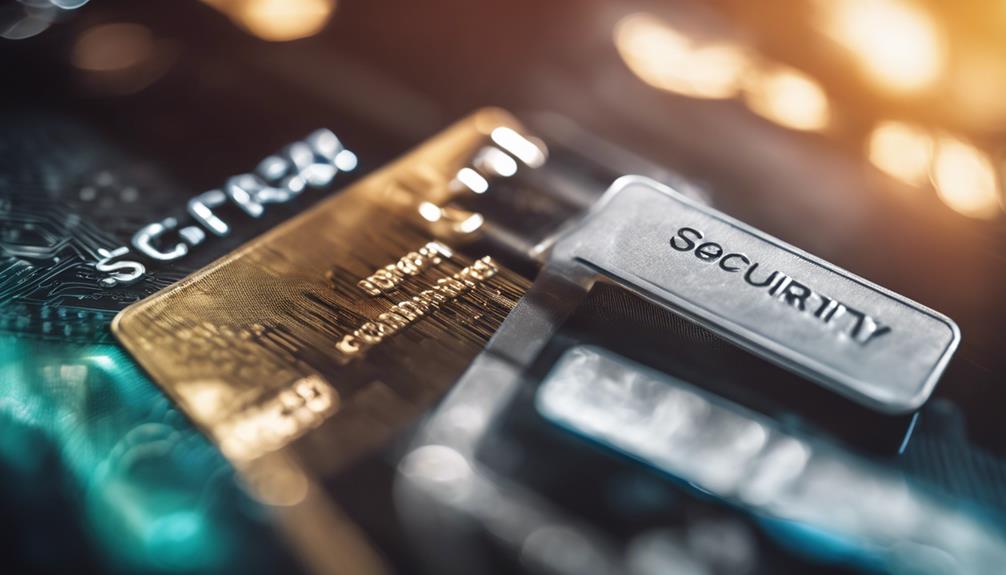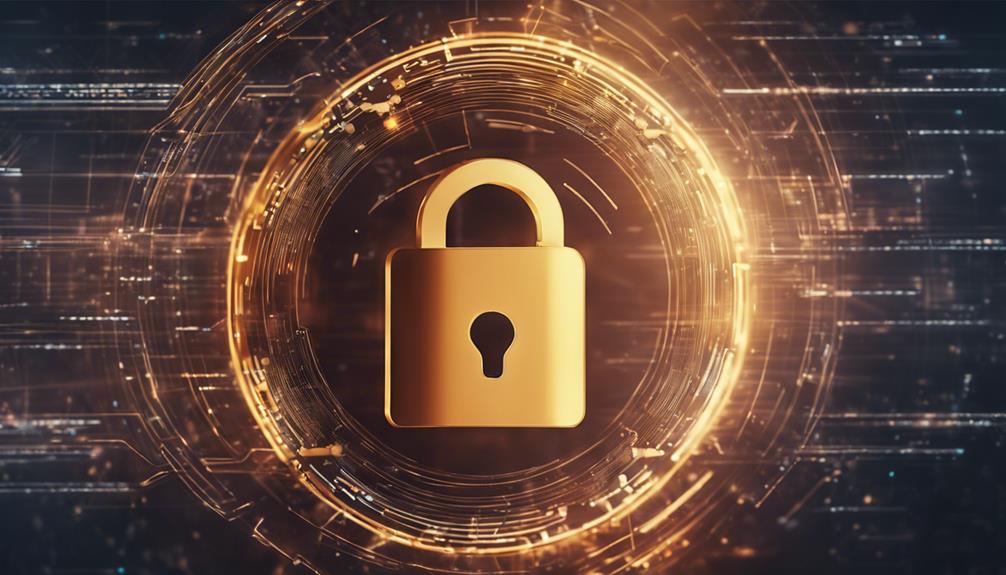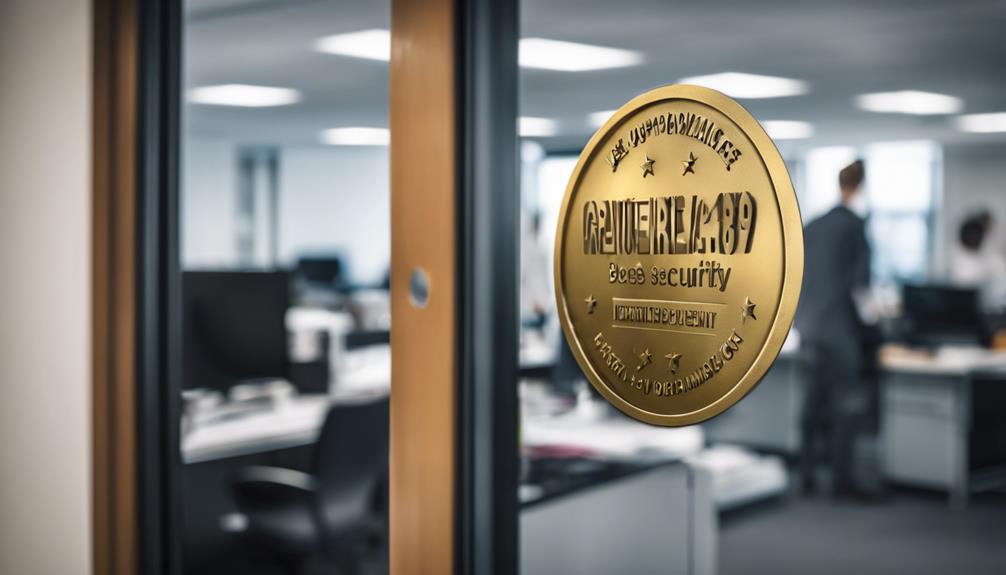Maximizing the power of PCI compliance guarantees robust protection for your business and customers. It safeguards sensitive payment data, meeting necessary security standards and building trust. Key Components of PCI DSS Level 1 include stricter validation requirements, annual assessments by a QSA, and external audits like ROC and penetration tests. Achieving Level 1 Compliance demands adherence to 12 security standards, thorough annual assessments, and external PCI audits. Benefits of Level 1 PCI Compliance encompass enhanced payment security, customer trust, and reduced fraud risks. Impact on businesses includes customer trust, enhanced reputation, and protection from financial losses. Enhance security and trust with Level 1 Compliance.
Key Takeaways
- Level 1 PCI Compliance ensures the highest security standards for businesses processing over 6 million transactions annually.
- Annual assessments by a Qualified Security Assessor (QSA) are mandatory for Level 1 compliance.
- External audits like ROC, quarterly scans, and penetration tests are required for Level 1 PCI DSS compliance.
- Achieving Level 1 compliance involves completing a Report on Compliance (ROC) and providing an Attestation of Compliance (AOC).
- Level 1 compliance enhances payment security, fosters trust, and reduces fraud risks for businesses.
Importance of PCI Compliance Levels

Why are PCI compliance levels important for businesses processing payment transactions?
PCI compliance levels play a significant role in safeguarding sensitive payment information. As a business processing transactions, adhering to the appropriate PCI compliance level guarantees that you're meeting the necessary security standards set by the Payment Card Industry.
This not only protects your customers' data but also helps in building trust and credibility. By following the specific requirements based on your transaction volume and business size, you demonstrate a commitment to ensuring the security of payment card data.
Achieving and maintaining PCI compliance levels not only protects your business from potential breaches and fines but also strengthens your reputation in the marketplace, ultimately leading to increased customer satisfaction and loyalty.
Key Components of PCI DSS Level 1

Shifting from discussing the importance of PCI compliance levels, comprehending the key components of PCI DSS Level 1 is crucial for businesses processing high volumes of payment transactions.
PCI DSS Level 1, the highest security standard, mandates stricter validation requirements for merchants with significant transaction volumes. Companies at this level must undergo more rigorous security measures to safeguard payment data.
Level 1 compliance involves annual assessments by a Qualified Security Assessor (QSA) and external audits like ROC, quarterly scans, penetration tests, and Attestation of Compliance (AOC). These measures guarantee that businesses processing over 6 million transactions annually meet the stringent security standards set by the PCI Security Standards Council.
Achieving Level 1 compliance demonstrates a commitment to securing sensitive customer information and upholding trust in payment transactions.
Achieving Level 1 Compliance Requirements

To achieve Level 1 compliance requirements, businesses must diligently follow the 12 outlined PCI DSS security standards. These standards cover aspects such as maintaining a secure network, protecting cardholder data, implementing strong access control measures, regularly monitoring and testing networks, and maintaining an information security policy. Additionally, businesses must ensure that any third-party service providers also comply with these standards. One important aspect of Level 1 compliance is the power of preauthorization charges, which helps to prevent fraudulent transactions by ensuring that the funds are available before the final transaction is completed. Overall, achieving Level 1 compliance requires a comprehensive approach to security measures and a commitment to ongoing monitoring and testing to ensure the continued protection of cardholder data. In addition to the power of preauthorization charges, businesses seeking Level 1 compliance must also implement encryption for transmission of cardholder data and regularly update their security systems and processes to address new vulnerabilities and threats. By incorporating the power of preauthorization charges into their payment processing systems, businesses can add an extra layer of protection against potential fraudulent activities, ultimately helping to maintain the integrity and security of their customers’ payment information. This, combined with strict adherence to the PCI DSS security standards, is essential for businesses to achieve and maintain Level 1 compliance. Understanding preauthorization charges is crucial for businesses seeking Level 1 compliance, as it allows them to verify the availability of funds and reduce the risk of chargebacks. By familiarizing themselves with the process of preauthorizing charges, businesses can better protect themselves and their customers from potential fraud. This knowledge, combined with a strong commitment to PCI DSS security standards, will enable businesses to establish a secure and reliable payment processing environment. Furthermore, businesses must also implement strong authentication measures to validate the identity of users accessing cardholder data, as well as maintain detailed logs of all access to network resources. These additional measures, in conjunction with the power of preauthorization charges, enhance the overall security posture of the business and help to mitigate the risk of unauthorized transactions. By leveraging the power of charges, businesses can instill confidence in their customers while also meeting the stringent requirements for Level 1 compliance. Maximizing efficiency with preauthorization charges involves streamlining the payment process and reducing the likelihood of declined transactions. By confirming the availability of funds beforehand, businesses can minimize the risk of payment delays and improve the overall customer experience. This, combined with the implementation of robust security measures, demonstrates a commitment to both security and customer satisfaction, essential for maintaining Level 1 compliance. Leveraging the power of preauthorization charges not only strengthens the security of payment systems but also enhances the efficiency and reliability of transactions, ultimately benefiting both the business and its customers. By leveraging the power of preauthorization charges, businesses can significantly reduce the likelihood of fraudulent transactions and unauthorized access to cardholder data. This proactive approach to security not only helps businesses achieve Level 1 compliance but also builds trust with customers by demonstrating a commitment to protecting their sensitive payment information. In combination with other security measures, such as encryption and access control, the power of preauthorization charges forms a crucial part of a comprehensive strategy to safeguard against potential security threats. Businesses must also ensure that their employees are well-trained in identifying and preventing fraudulent activities, as human error and negligence can also pose security risks. By incorporating the power of preauthorization charges into their payment processing systems, businesses can add an extra layer of protection against potential fraudulent activities, ultimately helping to maintain the integrity and security of their customers’ payment information. This, combined with strict adherence to the PCI DSS security standards, is essential for businesses to achieve and maintain Level 1 compliance. Leveraging the power of preauthorization charges not only strengthens the security of payment systems but also enhances the efficiency and reliability of transactions, ultimately benefiting both the business and its customers.
Achieving Level 1 compliance involves conducting thorough annual assessments performed by a Qualified Security Assessor (QSA). QSAs review systems, processes, and security measures to guarantee compliance. Additionally, external PCI audits, including completing a Report on Compliance (ROC), quarterly scans, penetration tests, and providing an Attestation of Compliance (AOC), are essential for meeting Level 1 requirements.
Benefits of Level 1 PCI Compliance

Level 1 PCI Compliance greatly enhances your business's payment security and fosters customer trust. By achieving Level 1 compliance, you signal to your customers that their payment information is being handled with the highest standards of security. This not only reduces the risk of fraud threats but also instills confidence in your brand, leading to increased customer loyalty and repeat business. Additionally, being Level 1 compliant helps you avoid non-compliance fines and potential lawsuits, saving you both money and reputational damage. Ultimately, investing in Level 1 PCI Compliance not only protects your business but also sets you apart as a trustworthy entity in the eyes of your customers.
| Benefits of Level 1 PCI Compliance |
|---|
| Enhanced payment security |
| Increased customer trust |
Impact of Level 1 Compliance on Businesses

Enhancing payment security through Level 1 PCI Compliance greatly impacts businesses by fostering customer trust and reducing fraud risks. Achieving Level 1 compliance demonstrates your commitment to safeguarding sensitive payment information, reassuring customers that their data is secure.
By meeting the stringent validation requirements of Level 1, you enhance your reputation and credibility in the industry. This heightened level of security not only protects your customers but also shields your business from potential financial losses due to fraud incidents.
Additionally, complying with Level 1 standards can lead to increased customer loyalty and satisfaction, ultimately translating into long-term success and growth for your business. Embracing Level 1 PCI Compliance is a strategic investment in both security and customer satisfaction that can positively impact your business operations.
Frequently Asked Questions
What Are the Consequences of Failing to Achieve Level 1 PCI Compliance?
Failing to achieve Level 1 PCI compliance can result in severe consequences for your business. Non-compliance risks data breaches, leading to financial losses, damaged reputation, and potential lawsuits.
Without meeting the stringent security standards, you may face hefty fines from credit card companies and lose customer trust. Protecting sensitive payment information through compliance is essential for safeguarding your business and maintaining credibility in the marketplace.
Can Businesses at Lower PCI Levels Benefit From Implementing Level 1 Security Measures?
Implementing level 1 security measures benefits lower PCI level businesses by proactively strengthening payment security. While not mandatory, these measures offer advanced protection against fraud and data breaches. For example, implementing level 1 security measures may include using strong encryption methods and requiring multi-factor authentication for access to payment systems. Additionally, understanding preauthorization charges and how to handle them appropriately can also help lower PCI level businesses to safeguard their payment processes. By taking these proactive steps, businesses can reduce their risk of falling victim to cyber attacks and protect their customers’ sensitive payment information.
Is Level 1 PCI Compliance a One-Time Achievement or an Ongoing Process?
Level 1 PCI compliance is an ongoing process, not a one-time achievement. It requires continuous effort to uphold the highest security standards for handling high transaction volumes.
Regular assessments by a Qualified Security Assessor, external audits, and penetration testing are essential. By maintaining compliance, you guarantee ongoing protection of payment data, build customer trust, and mitigate fraud risks.
Stay vigilant to uphold the security measures necessary for Level 1 compliance.
How Do Businesses Transition From Lower PCI Levels to Level 1 Compliance?
To shift from lower PCI levels to Level 1 compliance, businesses undertake a diligent journey. Enhance security protocols, intensify validation efforts, and involve a Qualified Security Assessor for annual assessments.
Embrace rigorous external audits encompassing ROC, scans, tests, and an attestation of compliance. Evolve systems, fortify processes, and adhere ardently to the 12 PCI DSS requirements.
Engage expert guidance, embody commitment, and endure the process for enhanced security stature.
Are There Specific Industries or Sectors Where Level 1 Compliance Is Mandatory?
In certain industries like finance, healthcare, and e-commerce, Level 1 PCI compliance is mandatory due to handling high volumes of sensitive payment data. These sectors face increased risks and regulations, making stringent security measures essential.
Conclusion
To summarize, achieving Level 1 PCI Compliance is essential for safeguarding your business and customer data. Remember, 'an ounce of prevention is worth a pound of cure.'
By implementing stringent security measures and undergoing annual assessments, you can enhance your security posture, protect your customers, and stay ahead of the curve in today's digital landscape.
Don't underestimate the power of PCI Compliance in boosting your reputation, sales, and overall business success.










